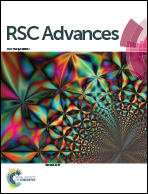Bio-inspired self-assembly of waxberry-like core-shell SiO2@TiO2 nanoparticles towards antiglare coatings
Abstract
Waxberry-like core–shell SiO2@TiO2 nanoparticles were prepared by liquid-phase deposition (LPD) method. The dip-coating self-assembly of waxberry-like core–shell SiO2@TiO2 nanoparticles has been used to fabricate coatings with excellent antiglare properties in the large angle and wide wavelength range. The field emission scanning electron microscopy (SEM) and transmission electron microscopy (TEM) measurements showed that the surface of SiO2 nanoparticles were coated by titania as a shell with controllable and uniform thickness. The ultraviolet visible near-infrared spectrophotometer (UV-Vis-NIR) results indicate that the maximum transmittance of the antiglare coating is up to 95.80% in the visible band, whereas that of the pure glass substrate is only 92.10%. The scattering and haze of the films have been measured to show that such specifically structured coatings exhibited good antiglare properties in the large angle and wide wavelength range.



 Please wait while we load your content...
Please wait while we load your content...